Background
Our company had developed a proof of concept designed for the insurance market, a drone-based solution for analyzing damage to roofs through machine learning. Our product had been well received by our existing personas, but we faced a new challenge: taking it to the construction market. We needed to improve the workflow for a new persona without negatively affecting the experience of the existing personas.My Role and Responsibilities
As the lead UX designer on the project, my responsibilities included working with a senior user researcher to develop interview scripts and test plans, performing field interviews, leading heuristic evaluations, working with multiple project managers, acquiring an FAA Part 107 license (to legally fly a drone for commercial purposes), and designing new workflows and concepts for the updated user experience. As the initial version of the product had already been implemented for the insurance market, there was limited time and a low appetite for drastic changes, so I needed to approach this challenge strategically to find the areas of the user experience that could produce the largest improvement with the least amount of changes.Research and Analysis
User Interviews:
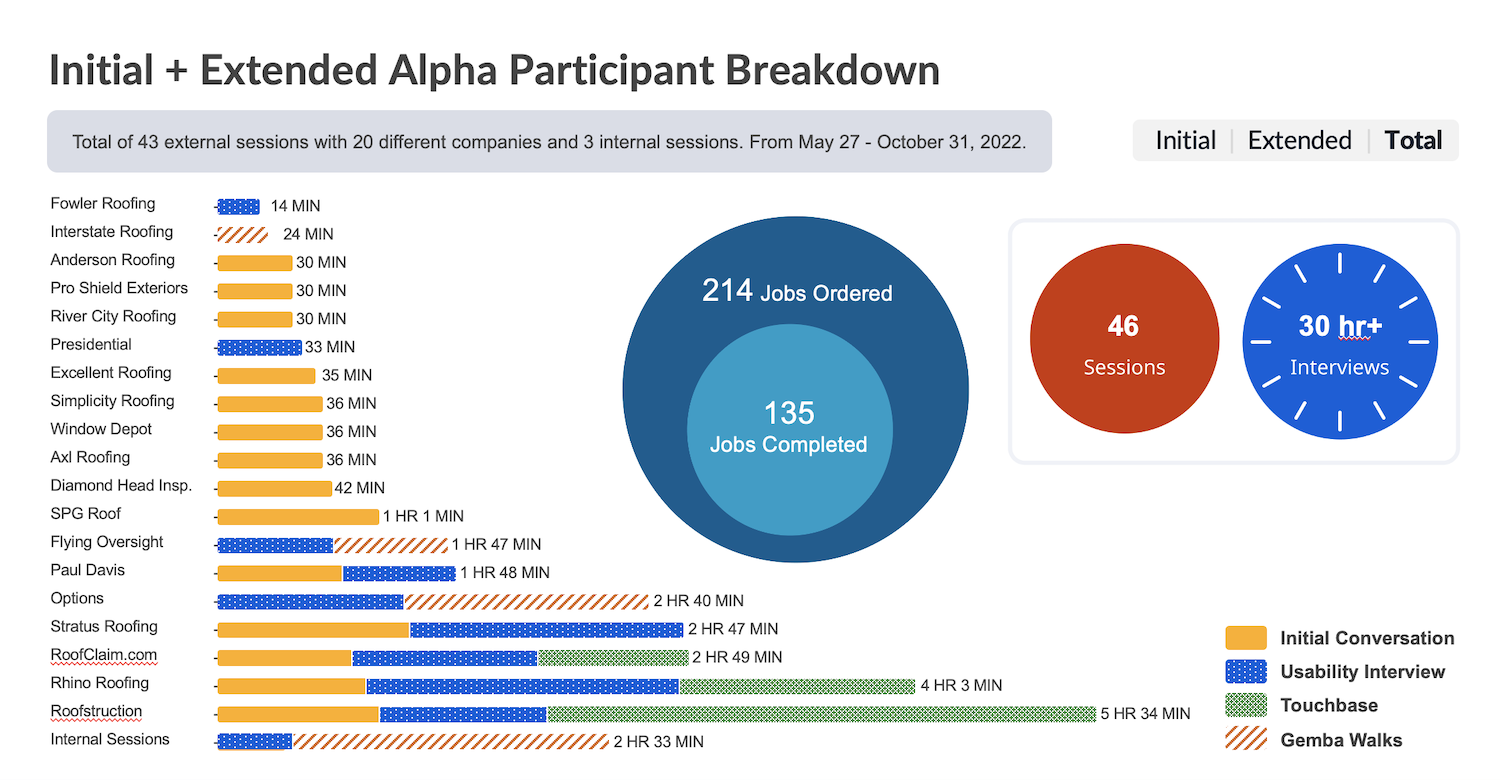
I led interviews with new users to understand their needs and challenges. Through these interviews, we were able to identify a number of critical feature workflows that were cumbersome or unintuitive.
Usability Studies:
I facilitated moderated sessions to directly observe areas where users encountered difficulties with the current design. During these sessions, we uncovered several tasks that caused confusion for users, particularly during initial setup. Additionally, we identified issues with our drone vendor's interface, such as problems with facet editing and manual photos capture, that were causing further confusion.
Competitive Analysis:
To determine our place in the market and identify potential areas of confusion for users who switch to our product, we conducted a thorough comparison of both the features and interface of our product alongside those of our competitors. Through this comparison, we found several features that our product lacked in comparison to our competitors, but we also identified some unique ways in which our product stood out, such as our automated flight planning and roof-facet-context view.
Contextual Inquiry:
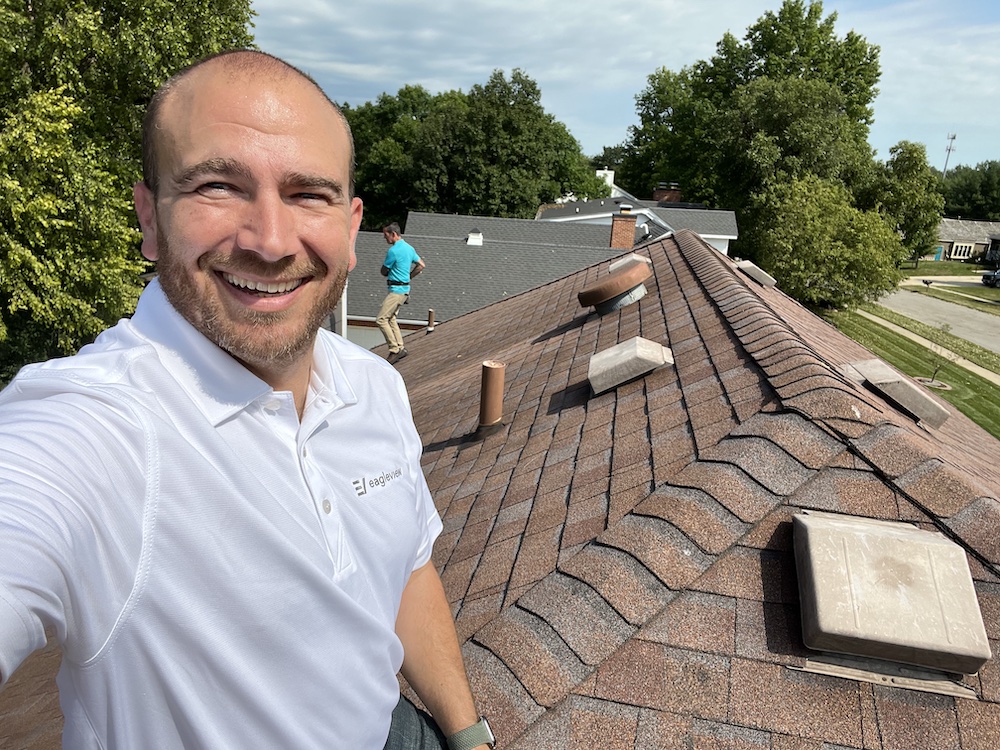
I went on-site to a location that was recently impacted by a major hailstorm to observe and shadow roofers. This allowed me to gain insights into how their daily workflow operates, identify challenges that cannot be uncovered through virtual interviews alone, and gain a better understanding of their working environment. During this time, I was able to learn about struggles that some users may not have been able to articulate previously. In particular, I observed how system malfunctions could interfere with daily work and identified how issues with device charging and poor upload speeds in the field could potentially lead to delays that might cause a roofer to lose business.
Task Analysis:
I spearheaded the task analysis process where we dissected individual tasks to evaluate how well the current system aligned with user goals. Through this analysis, we discovered a number of tasks that caused confusion for users, particularly during the initial setup stage.
Journey Map:
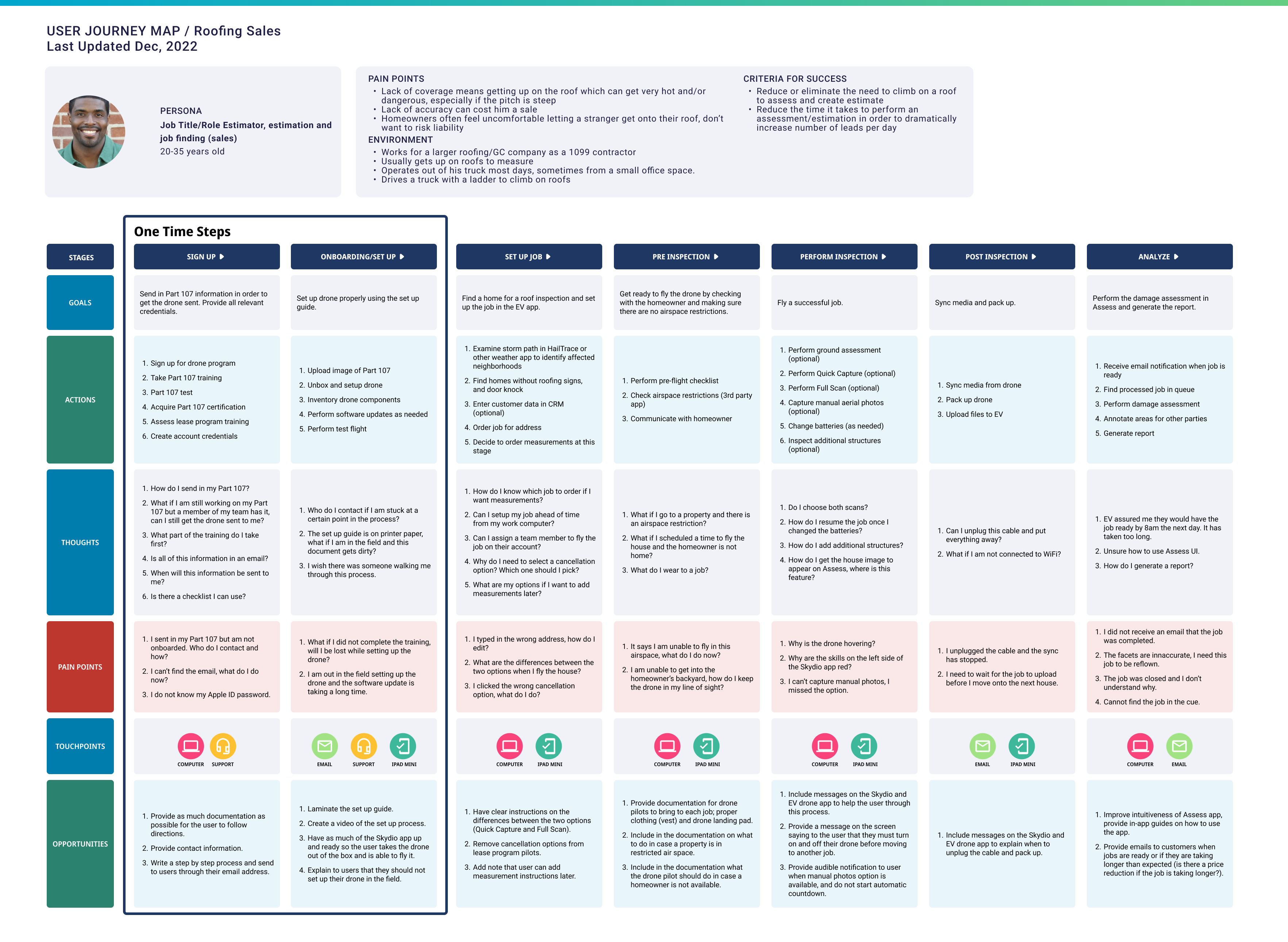
I took charge of developing a new journey map based on user interviews and a comprehensive understanding of the product concept. The purpose of this effort was to ensure that no task was viewed in isolation, but rather as part of a larger journey spanning from the initial setup stage through repeated use and final output.
Heuristic Analysis:
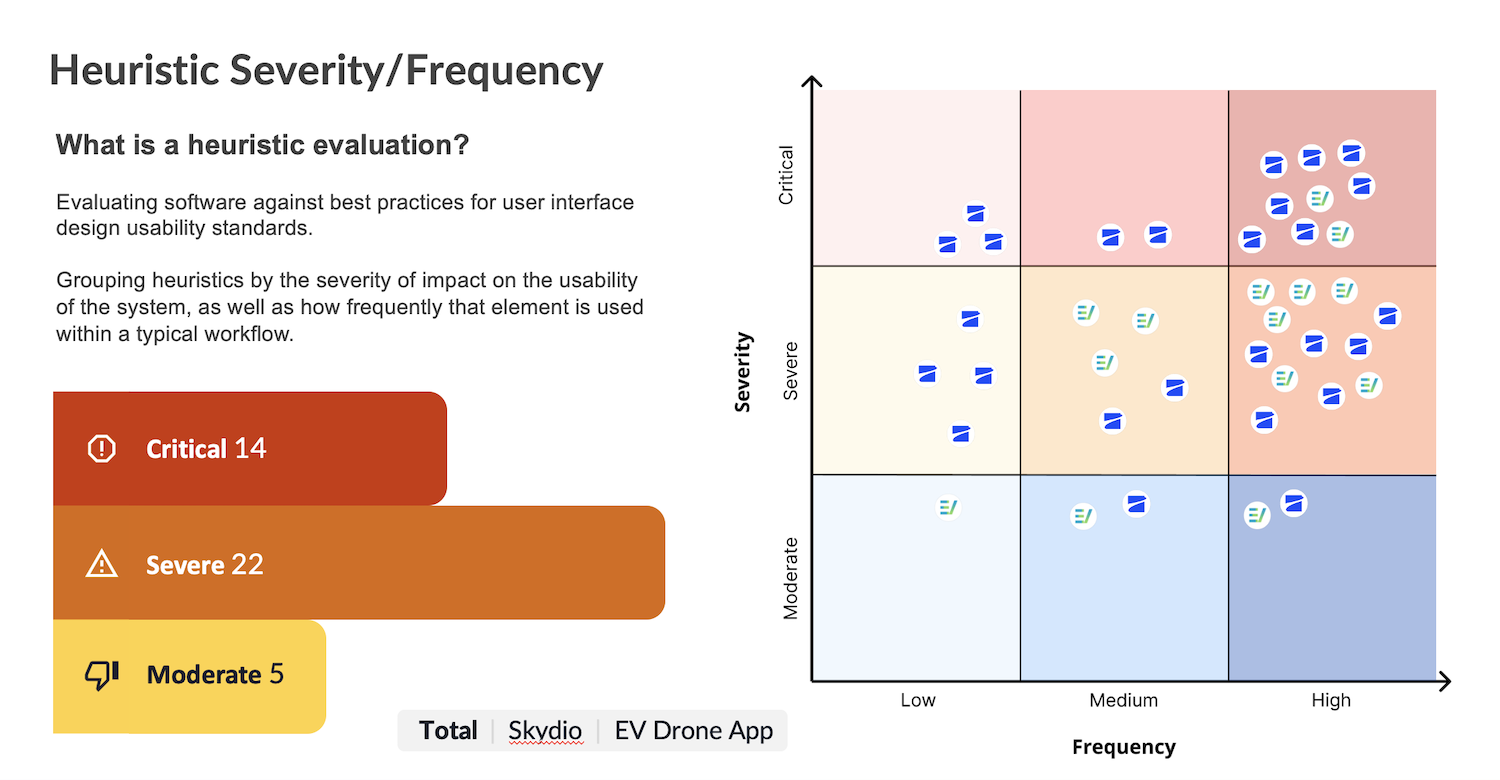
Additionally, my team performed multiple heuristic analyses to identify areas where the current design violated fundamental usability principles. We transformed the results into a chart to present the severity and frequency of heuristic violations in a more easily understandable manner for non-designer stakeholders.
Outcomes and Results
Based on our research and analysis, we were able to make a number of improvements to the user experience for the new persona in the construction market:
Simplified onboarding process:
We redesigned the onboarding process to make it more intuitive and streamlined. We removed unnecessary steps and provided clearer instructions.
Improved interface design:
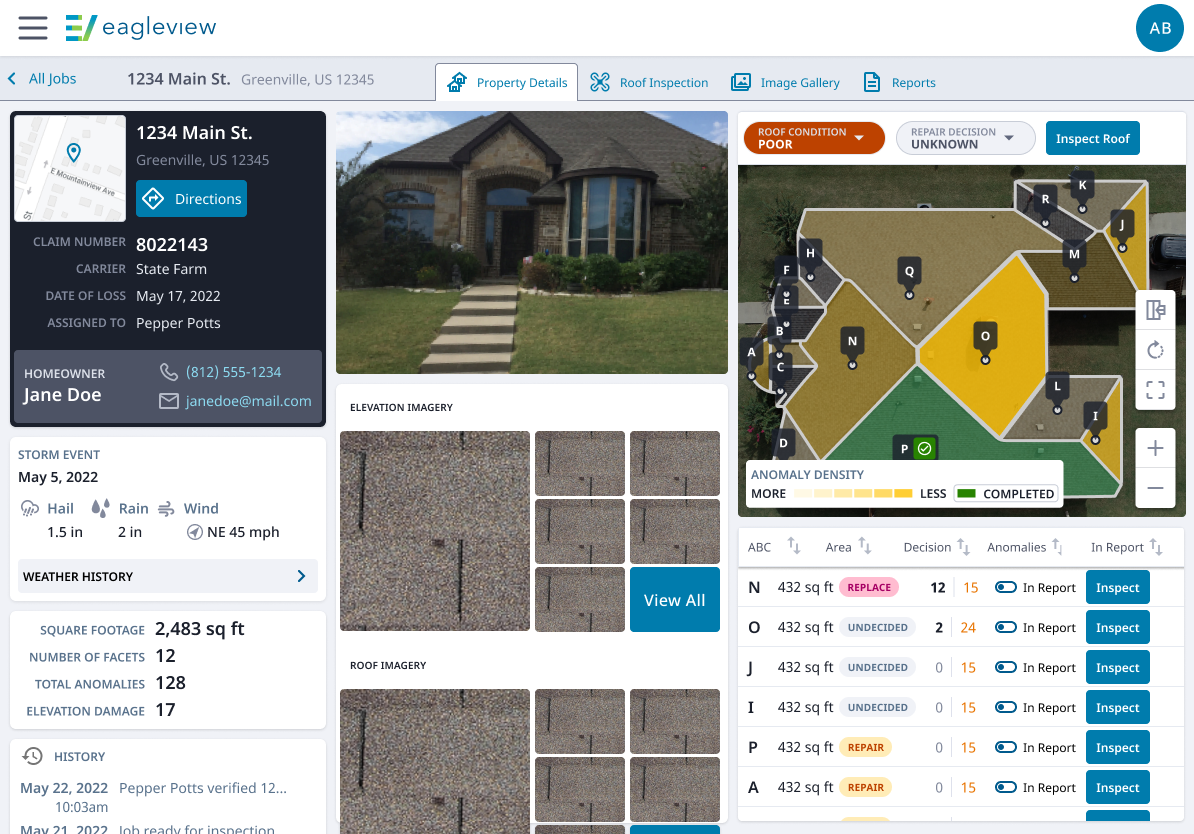
We made changes to the interface design to improve the clarity of the information presented and make it easier for users to navigate.
Mobile interface design:
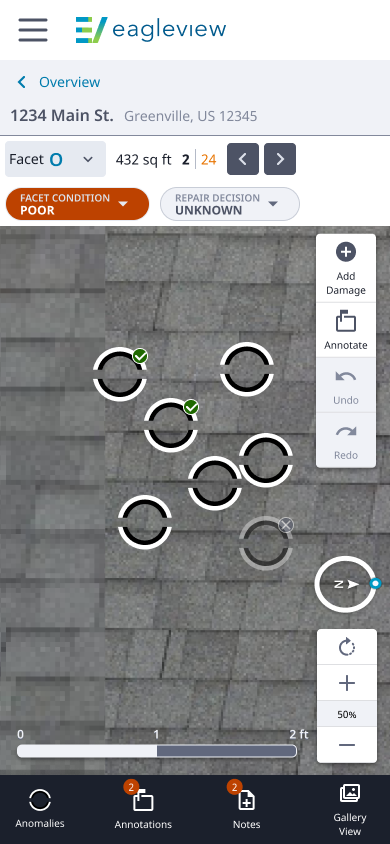
Based on usability testing, we understood that users would benefit from being able to utilize the software interface in the field, so explored mobile interface design options to propose to stakeholders.
Enhanced drone vendor interface:
We proposed improvements to our drone vendor to improve their interface, making it more user-friendly and less prone to confusion.